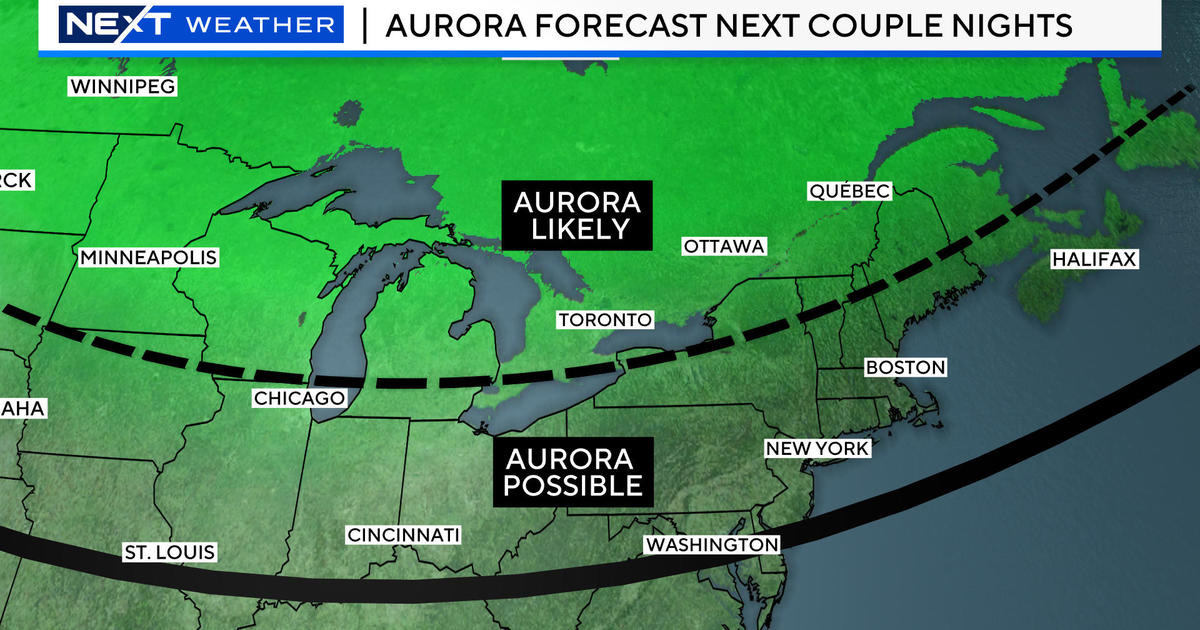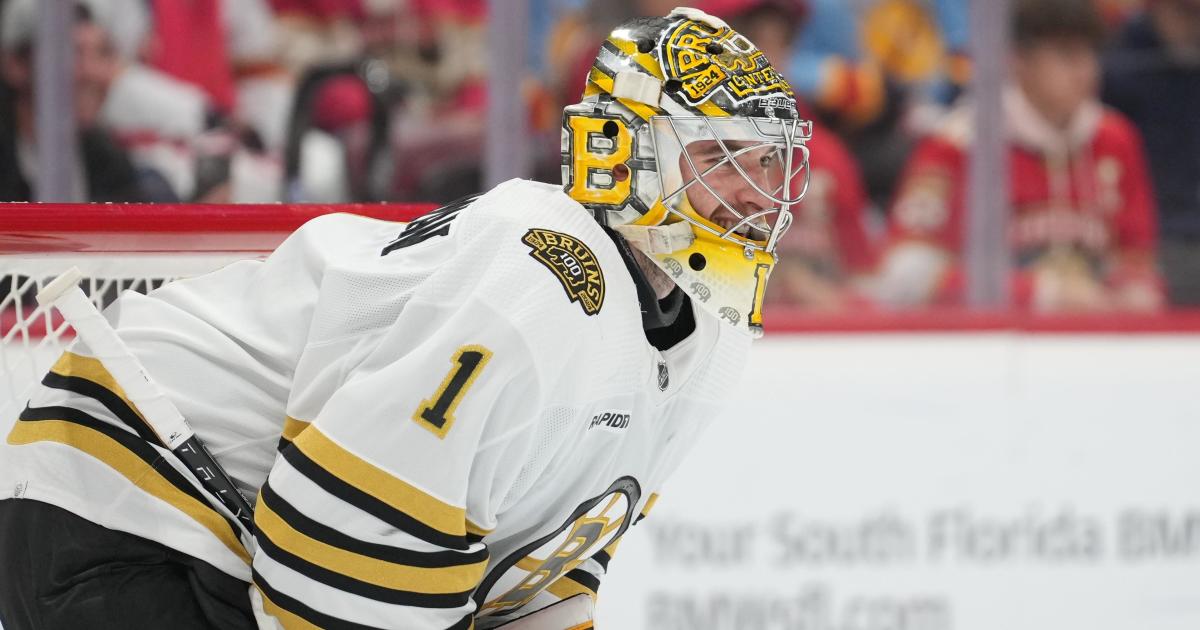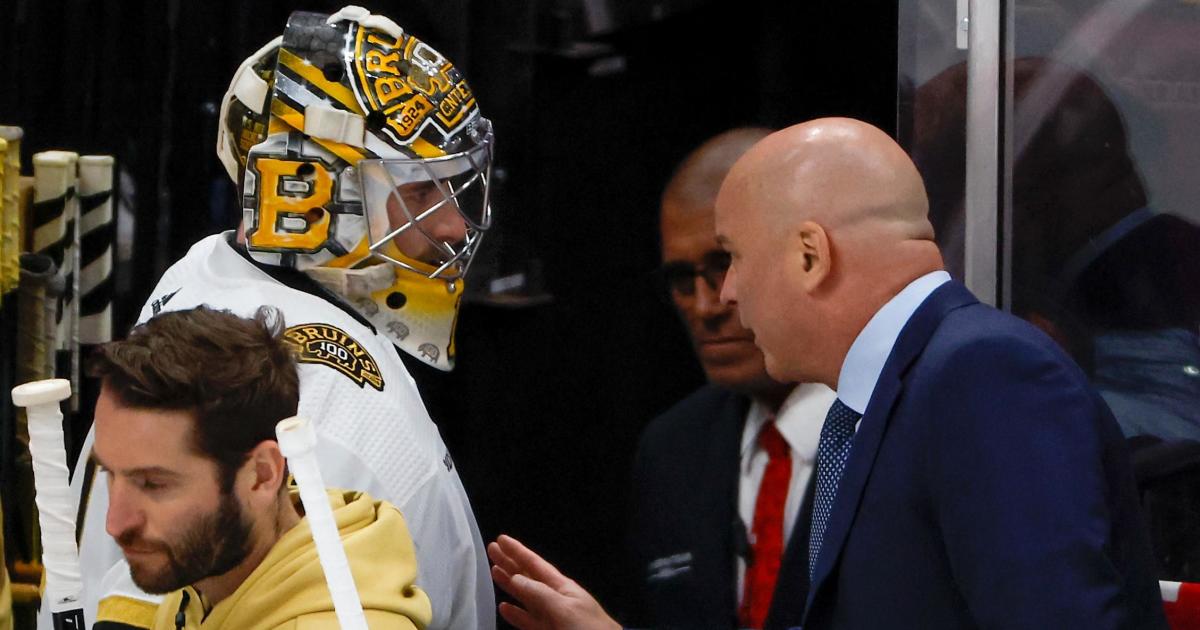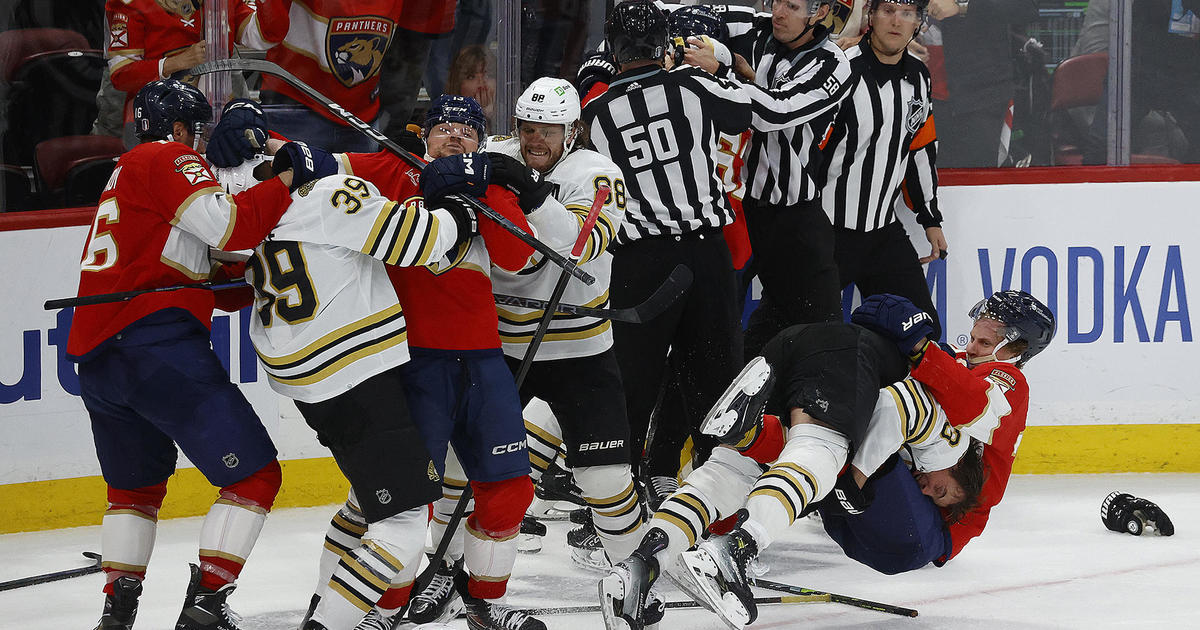So What Can Be Done About The Senators' Neutral Zone Trap?
By Matt Dolloff, CBS Boston
BOSTON (CBS) -- Guy Boucher's 1-3-1 defense has been incredibly hard for the Bruins to beat in the coach's time with the Ottawa Senators - and even harder to watch.
The defensive system that Boucher rigidly employs in Ottawa, widely known as the "neutral zone trap," is not nearly as prevalent in the National Hockey League as it was in the mid-to-late-'90s. But the Sens are proving that the system can still be effective.
That doesn't mean that the trap is anything that fans actually want to watch. The trap employs a single forechecker up front who forces the opposing puck carrier to one side, which then makes it hard to get passes through a wall of three defenders at the red line. The fifth player, usually a defenseman, hangs back by his own blue line and scoops up whatever pucks that the other team is able to squeeze into the offensive zone.
As a result, the trap is often incredibly effective at stopping the other team. But it grinds the pace of games to a halt and leads to some truly ugly hockey. The trap is especially excruciating with Boucher's Senators, who lack high-end offensive firepower up front and often park their most dynamic player, defenseman Erik Karlsson, all the way in the back.
So what can be done about the trap? That's a twofold question: What can the Bruins do about Boucher's defense in their Eastern Conference Quarterfinal series, which starts Wednesday night in Ottawa? Also, what can the entertainment-hungry NHL do about the Ken Burns of hockey?
First, a brief history.
It's unclear which coach or team "invented" the neutral zone trap, but it has origins in the 1970s with teams in Sweden and Czechoslovakia who needed to find a way to slow down the dominant Russian teams of the era. Scotty Bowman, widely regarded as the greatest coach in NHL history, adopted the system with the Montreal Canadiens of the 1970s, who won four straight Stanley Cups from 1976-79.
The Habs of that era were best known for the high-flying offense of winger Guy Lafleur and defenseman Larry Robinson, both Hockey Hall of Famers. But they also employed the trap in order to protect leads, and it certainly worked. The 1976-77 Canadiens in particular, who went 60-8-12 for a preposterous 132 points, led the league in both goals scored (387) and fewest goals allowed (171). It also helped the '70s Canadiens that they had Bob Gainey, the Patrice Bergeron of his era, who won the first four Selke Trophies from 1978-81.
The Jacques Lemaire-led New Jersey Devils popularized the system in the mid-to-late-'90s after they swept the favored Detroit Red Wings in the 1995 Stanley Cup Finals, trapping the more talented team into oblivion. More and more teams employed the trap, leading to the so-called "Dead Puck Era" and a significant post-lockout shift in the rules to deter teams from trapping.
Post-2005 rule changes included shrinking the neutral zone itself, legalizing two-line passes over the red line, and adding the "trapezoid" behind the net to prevent goalies from acting as a third defenseman in the corners and along the boards. It's led to a more fast-paced game overall, but Boucher's Sens are proving that it can still be done with the right personnel against the right opponents.
Which brings us to the Bruins ...
The Senators' trap defense has been particularly effective against the Bruins this season, and that's because the B's don't necessarily have enough of the right players to thwart it. The trap can be beat if you have skilled, mobile defensemen who can join the rush and make big, long passes through the neutral zone.
That's where the loss of Torey Krug could really sting the Bruins defense, but Colin Miller's strong skating and puck-moving could have a chance to help against the trap. Even Charlie McAvoy, who will make his NHL debut Wednesday night, has the right kind of skills to effectively combat the trap. McAvoy may lack NHL experience, but the Sens' lack of knowledge and experience playing against him could help the 19-year-old blue liner.
Beating the trap is also predicated on having speedy, skilled wingers who can get past the second level and win puck battles if they're fortunate enough to get it into the offensive zone. This is where Brad Marchand and David Pastrnak will be even more crucial to the Bruins' success than usual, and they will certainly need to be better in this series than they were against the Sens in the regular season (combined four points in seven games between them).
The Bruins certainly have some personnel that can beat the Senators' neutral zone trap, but it won't be easy. The playoffs is, of course, a whole new season - but the B's definitely need to be much better than they were in their previous four games against the Sens.
So what can be done about the trap?
Former Bruins head coach and current NHL analyst Mike Milbury said back in 1995, when the Devils' trap was smothering opponents and lulling audiences to sleep on a nightly basis, that the trap should be banned. The league obviously tried to put a stop to the trap, but it can only go so far. There's no way to effectively or consistently stop a team from keeping four or five players parked in the neutral zone without radically overhauling the rules of the game itself. Could the NHL succeed with a "paint"-type defensive rule like the NBA has?
In the case of the Bruins in this series against the Senators, ultimately they just have to deal with the trap and find a way to overcome it. Maybe they'll do what the Flyers did against the same system back in 2011, when Boucher was the coach of the Tampa Bay Lightning.
Which was, just stand there.
That game, which the Wall Street Journal called "The Worst Hockey Game Ever," made a mockery of Boucher's system that he still uses today in Ottawa. That same season, however, David Krejci and Nathan Horton proved that the system can be beat when the Bruins met the Lightning in the playoffs. The Bruins will need to recapture some of that same success to be more competitive in this playoff series than they were in the regular season.
The trap is difficult to beat, but it's not invincible. It's up to the Bruins to figure it out.
You can listen to coverage of Bruins-Senators live on 98.5 The Sports Hub, starting with pregame at 6:30!
Matt Dolloff is a writer for CBSBostonSports.com. Any opinions expressed do not necessarily reflect that of CBS or 98.5 The Sports Hub. Have a news tip or comment for Matt? Follow him on Twitter @mattdolloff and email him at mdolloff@985thesportshub.com.



